Legal tip 904. Deposit contract, watch out!
Wednesday, February 27, 2013
Do not understimate the importance of the deposit contract when buying a house.
Play your part in the negotiation (with the assistance of a good lawyer) in order to have strong protection of your rights and a smooth future purchase process
Elements to be included in the deposit contract:
1.- Full identification of seller and buyer
2.- Enough, official and clear identification of the property (Nota simple required,click here for more information)
3.- Definition of the contract which is being signed, agreed price, method of payment (expressing if any amount is delivered as a deposit or on account of the price) This denomination makes radical differences.
4.- Who will pay the expenses and taxes
5.- Time for the public deeds to be signed, etc…
The more in detail and clear, the more peaceful your purchase process will be.
It is very advisable to have an specific compensation clause that will avoid further discussions ( judicial even!) on this important matter.
It is necessary to pay a lot of attention to this contract as you will be committing to to conditions that will determine the purchase at a very high level.
.jpg)
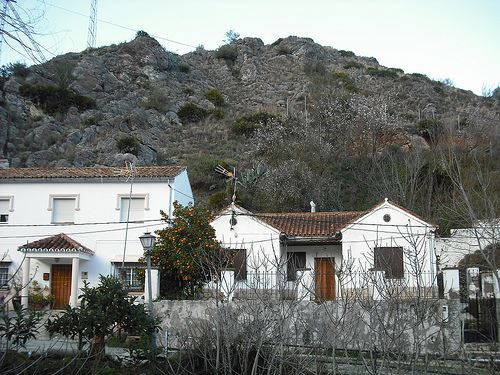
"Casas en la Estacion de Benaoján", Benaoján, Cadiz, South of Spain, by jm00092, at flickr.com
 0
Like
Published at 3:05 PM Comments (0)
0
Like
Published at 3:05 PM Comments (0)
Legal tip 903. NEW! Aids for enterpreneurs
Monday, February 25, 2013
Recent ( 23rd of February 2013)Royal Decree on measures to support entrepreneurship and spur growth:
The Government points out, among others, the following measures:
§ There shall be a flat fee of fifty euros in Social Security contributions for new autonomous under thirty who are initiating a self-employed activity, for the first six months.
§ Unemployment benefits are compatible with the onset of a self-employment activity, for the first nine months and for prople under thirty years.
§ Recipients of unemployment benefits under thirty years old may capitalize up to 100 % of its provision for this to be contributted to the capital of a company, always provided a working professional is stablished.
§ For people under 30 years old,it is extended from two to five years the length of the exercise of an activity that allows self-interrupt and thus resume collecting unemployment benefits.
§ Newly created companies will pay taxes at a reduced rate of 15 per 100 (up to a taxable income of three hundred thousand euros and 20% 100 (rest of the base) during the first two years of positive outcome.
§ Self-employed who initiate economic activities may apply a reduction of 20 per 100 in the net income obtained during the first two years of positive outcome.
§ Company's share of Social Security will be reduced by 75 per 100 for companies with more than 250 workers and 100 by 100 for the rest, when hiring part-time and with a formative link worekers under thirty with no previous work experience or coming from sectors where there is no demand for jobs or who has been unemployed for more than twelve months.
§ Self-employed and businesses of up to nine workers will benefit from a reduction of 100 100 of the company's share of Social Security for common contingencies during the first year of permanent hiring an unemployed under thirty.
§ Contract "young first job": changing the current temporary contract for hiring people under thirty, who are unemployed and without previous professional experience, with incentives to its transformation into permanent (bonus of five hundred euros / year for three years or seven hundred euros if you subscribe to females).
§ contract incentives are introduced in practice for those young people up to thirty years that have completed their training period may have a first work experience related to their degree. There will be a reduction in the company's share of Social Security for common contingencies up to 50 100.
Full text below:
BOE-A-2013-2030 by
 0
Like
Published at 11:27 AM Comments (3)
0
Like
Published at 11:27 AM Comments (3)
Legal tip 902. Spain is not the problem
Wednesday, February 20, 2013
Stronger capital requirements and the legal separation of risky financial activities are among the key recommendations of the "High-Level Expert Group on Reforming the Structure of the E.U. Banking Sector," published in October 2012 at the behest of the European Commission, with the aim of reforming the troubled E.U. banking sector.
Erkki Liikanen, governor of the Bank of Finland, chaired the group, which counted José Manuel Campa, Spain's former secretary of state for the economy and now a finance professor at IESE, as an expert member.
The woes of the European banking sector are the result of problems not so much of the business model per se, but rather of excessive risk-taking behavior in trading activities and real-estate lending, as well as overreliance on short-term funding, notes the report.
Introducing stronger capital requirements would enhance banking resilience, repair dysfunctional incentives and reduce taxpayer liability in the event of a future crisis.
As such, the expert group made five key recommendations for structural improvements within the European banking sector.
1. Separate Risky Activities. Legally separating complex derivative instruments into an independent company, and separating risky trading and proprietary activities from deposit-taking banks, would enhance transparency and help to reduce some of the systemic risks inherent in today's highly interconnected banking sector.
One possible argument against separation is that it might threaten the universal European banking model and limit the range of financial services available to customers.
Yet, as the report notes, separating risky trading activities does not necessarily mean that some of these activities could not be offered as part of the same holding company; the point here is to separate these activities, in order to insulate the deposit bank from the risks.
2. Wind Down Risky Positions. To prevent another crisis and contagion effects, banks must have recovery and resolution plans. These plans must allow the institution to diminish its exposure to risky activities without damaging the stability of the financial system. Achieving this may again require greater separation of activities, especially when positions are large relative to overall market size, posing even greater difficulties during distressed market conditions.
3. Bail-in Instruments as a Resolution Tool. Bail-in instruments offer a promising way for distressed banks to use existing bondholders to recapitalize the institution before drawing upon public funding.
Done properly, this should increase stability, while reducing overall losses from slow responses and costly bankruptcy proceedings.
However, to be successful, bail-in instruments should be predictable and the circumstances in which a bail-in would occur need to be clearly defined, so that investors understand their exposure. In this regard, greater transparency would help.
Systemic risks could be reduced by restricting the holdings of bail-in instruments to parties outside of the banking sector, such as institutional investors and life insurance companies.
Inclusion of bail-in instruments within top management remuneration at banks could also help, by aligning decision-making with long-term performance.
4. New Capital Requirements for Trading Books and Real-Estate Exposure. Current methods to model capital requirements are vulnerable to modeling errors, since operational risks do not accurately reflect the volume of trading book assets.
Also, the treatment of real-estate lending within the capital requirements framework must be reconsidered, to prevent systemic banking crises, which have historically originated from excessive lending in real-estate markets, coupled with overreliance on wholesale funding.
Internal risk models must be better coordinated and harmonized. This would inspire confidence in the adequacy of capital requirements.
Assessment of large exposure limits should consider inter-institutional and intra-group exposures as well.
5. Strengthen Governance and Control. The recent financial crisis has revealed the dire failure and shortcomings of boards and management systems. For this reason, improving corporate governance is critical.
Measures need to be taken to control compensation and reform remuneration, in order to encourage sustainable performance. Supervisors need to be given sanctioning powers -- such as lifetime professional bans or clawback clauses -- to enforce responsible risk management.
Improvements in the quality, comparability and transparency of risk disclosures to the public should help to enhance market discipline, win back investor confidence and rebuild trust between the public and bankers.
"El camino de Don Quijote", La Mancha, central Spain, by M Moraleda, at flickr.com
 0
Like
Published at 12:03 PM Comments (0)
0
Like
Published at 12:03 PM Comments (0)
Legal tip 901. Grazalema-- our family hometown--mentioned among best in Spain by Financial Times
Monday, February 18, 2013
Good taste these FT guys.
Enjoy below:
Spain & Portugal 2013: 25 top holidays
With some of the lowest holiday prices in Europe, it’s no wonder we’re stampeding to Spain
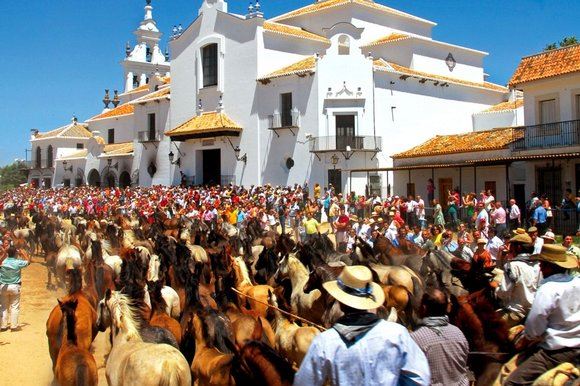 Mane attraction: join the riders of El Rocio (3) (Travel Pictures Ltd) Mane attraction: join the riders of El Rocio (3) (Travel Pictures Ltd)
Away from the high-rise costas, you’ll find parts of Spain and Portugal unchanged from — or perhaps reverting to — the Middle Ages. Once deserted villages are bustling as those who left to seek their fortunes in the city return. In Jaen, steep fields are worked with horses. On the Ebro, fish traps of 16th-century design are still in use, and in bars in the Bragança region of northern Portugal, drinkers toss salt over their shoulders with every other sip to confound the devil (with questionable success: across the border, a record one in four Spaniards is unemployed).
The campo, while beautiful, isn’t always pretty, but for those seeking an authentic experience, small, specialist tour operators are finally making the countryside easier to explore. New trips are on sale to less familiar areas such as Extremadura and the Sierra de Aracena. Two great rivers, the Douro and the Guadalquivir, are opening up to cruising, and there are more opportunities than ever to indulge in brilliant, innovative Spanish cuisine.
And there’s more good news. Overall holiday costs in Spain have fallen by 41% since 2008: a three-course meal for two with wine in Malaga, which cost £42.88 back then, is now only £22.32.
Yet as living costs fall, flight prices are rising. Two in three of us now put together our own trips to Spain — buying flights, car hire and accommodation separately, rather than booking a package — and if that applies to you, the advice is to book early. Returns to Malaga at Easter are more than £170, and flights to Valencia during the school summer holidays are topping £190.
Unless stated, flights are not included — you’ll find travel details at the end of this article
1 Walk the Sierra
Andalusia
In a remote valley between Aracena and Castañuelo, on the eastern edge of the Sierra de Aracena y Picos de Aroche natural park, you’ll find Finca El Moro (fincaelmoro.com). The homemade bread, home-cured jamon and chorizo, home-pressed oil and organic fruit and veg will conspire — with the pool, the views, the sunshine and the charm of your hosts, Nick and Hermione Tudor — to keep you rooted, but you must resist. New for 2013 is a tailor-made walking holiday, with rambles radiating from the finca and ranging from nowhere in particular to a two-day circular hike through the cork oaks and wild-flower meadows, staying overnight in the village of Alajar. A week starts at £595pp, including accommodation, all meals and drinks. Fly to Seville and rent a car.
2 Authentic Spain by bike
Extremadura
If you’ve searched in vain for the “real” Spain, you haven’t been to Extremadura, the region to the north of Andalusia, on the Portuguese border. This is Luis Buñuel’s Tierra Sin Pan (Land Without Bread), a place of extraordinary beauty and hopeless self-promotion, until recently all but unknown to tourists. Freedom Treks (01273 224066,www.freedomtreks.co.uk) has a new self-guided cycling week, starting out in Oropesa and covering 160 miles via the Gredos Mountains, Plasencia, Trujillo, and the Monfrague National Park, ending up in Caceres. You’ll stay in paradors along the way, and prices start at £835pp, including luggage transfers, but not travel; bike hire is £96. Fly into Madrid, then take a train to Oropesa (£14.50). The return leg from Caceres costs £27.
3 Ride to El Rocio
Andalusia
Few Englishmen have seen El Rocio, site of Spain’s biggest pilgrimage and the spiritual heart of Andalusia. With its streets of sand, hitching posts and huge livery yards, it is also the holiday home of Spanish equestrianism, and the only authentic way to arrive is on a puro caballo Andalus — a purebred Andalusian horse. Maria Elena Dendaluce will be your guide, leading you from La Cortijo La Corbera, south of Seville, on a six-night ride along the pilgrim routes to El Rocio, crossing the Doñana National Park, sleeping in traditional haciendas and paying a visit to the Royal Andalusian School of Equestrian Art, in Jerez. The rides take place in spring and autumn; the price is £1,900pp, all-inclusive, with Equiberia (00 34 689 343974, equiberia.com). Fly to Seville.
4 Explore Grazalema
Cadiz
Contrary to popular belief, the rain in Spain does not fall mainly on the plain, but on the highlands of the Grazalema National Park. The limestone peaks force warm Atlantic airstreams upwards, where they condense, then fall as rain.Go in late spring and you’ll find the high meadows kaleidoscopic with wild flowers, including bee and lax-flowered orchids, wild peonies and swathes of wild broom. Walk Andalucia (020 8385 2024, walk-andalucia.com) has an eight-day wild-flower walking break led by the author and botanist Eva Bratek. You’ll eat at local restaurants and sleep in Moorish houses in the village of Torrox by night. The price is £799pp, including most meals and airport transfers, departing on April 6, May 18 or June 1. Fly to Malaga.
5 Cycle the Silver Coast
Porto to Lisbon
The Costa de Prata, running south from Porto to Lisbon, is Portugal’s newest playground. As you cycle on clifftops, through forests, down quiet country lanes and along the magnificent 25-mile stretch that skirts the Ria de Aviero, a stunning blue lagoon, you’ll probably wonder why nobody told you about this place before. Skedaddle (0191 265 1110, skedaddle.co.uk) has a nine-day self-guided bike ride, covering between 27 and 40 miles a day, from £895pp, B&B. The price includes luggage transfers, GPS navigation and airport transfers; bike hire is £100. You’ll need flights into Porto and out of Lisbon.
6 Garden tour
Andalusia
All holidays need a soundtrack — and for this new Land of Castles, Palaces and Gardens tour, from the Royal Horticultural Society (0800 804 8710,rhsgardenholidays.com), you need Manuel de Falla’s Nights in the Gardens of Spain. Inspired by Debussy, these evocations of the lachrymose beauty of the Generalife, part of the Alhambra, in Granada, and the Alcazar gardens in Cordoba are underpinned by coquettish echoes of the habanera, suggesting secret assignations under a Spanish moon. Listen as you visit the Generalife, the Alcazar in Seville, Casa del Rey Moro, in Ronda, and the gardens of Cordoba by night. The six-night trip starts at £1,589pp, including flights, transfers, entry fees, breakfast and some lunches and dinners.
7 The road less travelled
Extremadura
New from Kirker (020 7593 2283, kirkerholidays.com) is a seven-night journey through Extremadura and Castile, exploring the architectural, cultural and natural delights of these little-known regions. The tour starts in Madrid and spends three nights in a parador at Trujillo, visiting the Roman city of Merida — perhaps second only to Rome itself for the splendour of its ruins — before moving on for four nights at the Hotel Palacio de los Velada, in Avila. From there you’ll tour Salamanca, considered by many to be the most beautiful city in Spain, Segovia and El Escorial, Philip II’s palace, before returning to Madrid. The price is £1,889pp, including flights, breakfast, five dinners and one lunch.
8 Spain by train, part 1
Castile-La Mancha
The first of these is a brand-new trail of three cities, taking in the old capital, Toledo, the new capital, Madrid, and Barcelona, the capital of the autonomous region of Catalonia, over eight nights, with not an airport in sight. You set off from London St Pancras, travelling via Paris and Biarritz, where you’ll spend a night, then on to Madrid for lunch, a guided tour and shopping. The following day you visit Toledo — beautiful, but as melancholic as a deposed king — before taking the high-speed AVE service for a four- night stay in Barcelona. The price is £1,298pp, including all travel, B&B accommodation in three- and four-star hotels, four dinners, two lunches and all excursions, through Treyn (01904 734940, railholidays.com).
9 Spain by train, part 2
Aragon and Navarre
Your second departure is a five-night feast aboard the luxurious Al Andalus train, accommodated in splendidly restored 1930s rolling stock. Starting with a tour of Zaragoza, you then head off to Pamplona, sampling tapas en route, before a detour by coach to a bodega in La Rioja for a wine tasting. You’ll spend the next two nights in the university city of Salamanca before taking the train east to Avila and Segovia, finally arriving in Madrid. Prices start at £2,350pp, all-inclusive, with Luxury Train Club (01249 890205, luxurytrainclub.com).
10 Searching for wildcats
Navarre
Head into the sparsely populated valleys of northern Navarre — the tiny autonomous community between Aragon and the Basque country — and you’ll find a thriving population of Felis silvestris, aka the European wildcat. The Continent’s answer to the snow leopard is best tracked in winter, when it stands out against a white background, and Naturetrek (01962 733051, naturetrek.co.uk) has a new six-day foray into this rugged land in search of it, as well as birds such as lammergeyers, snowfinches and Alpine accentors. The one-off trip departs on March 10 and costs £995pp, including flights, transfers and all meals.
 0
Like
Published at 4:28 PM Comments (0)
0
Like
Published at 4:28 PM Comments (0)
Legal tip 900. New! Court Decission on Banks liabilities
Monday, February 18, 2013
Good topic for a number 900 post of our blog. More exciting ones to come soon !
Huesca Appeal Court is adding to the number of Appeal Courts declaring very clearly on liabilities of Banks which received off plan advanced payments and did not ensure on the existence of the corresponding guarantees.
No excuse on the non existence of "special account" as the famous and old trick used by Banks is accepetd by the Huesca judges.
Good for Huesca judges and development and consolidation of this doctrine!
We
Cheers!
María
.jpg)

"Sallent de Gallego. Pirineo Aragonés. Huesca 42", Huesca, North-east of Spain, by Rafael Gomez-http://micamara.es, at flickr.com
 0
Like
Published at 2:01 PM Comments (0)
0
Like
Published at 2:01 PM Comments (0)
Legal tip 899. Nature in
Thursday, February 14, 2013
That´s why some areas like ours ( Costa de la Luz) are so in promotion in Spain against the over exploited, artificial old ones ( those famous Costas where corruption was well developed during the boom)
That´s also why Judges are willing to punish Banks who helped to create the mess in a big extent.
Yes, these are two very simple ideas. But it is always good to remember the essentials
Nature-Person-Freedom-Joy-Sharing- Respect-Live
Cheers is a sunny, sunny day
Maria
.jpg)
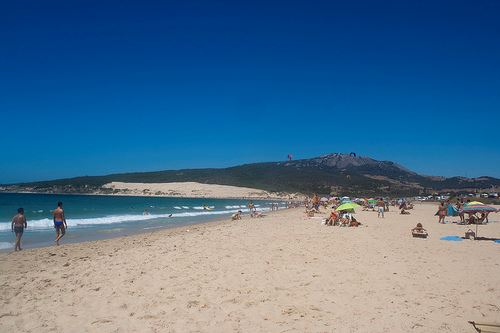
"Tarifa", beach "Valdevaqueros", Tarifa, Cadiz, South of Spain, by MarKiddo, at flickr.com
 0
Like
Published at 11:18 AM Comments (0)
0
Like
Published at 11:18 AM Comments (0)
Legal tip 898. Two General Bank Guarantees found
Tuesday, February 12, 2013
For Huma developments!
Maria
.jpg)
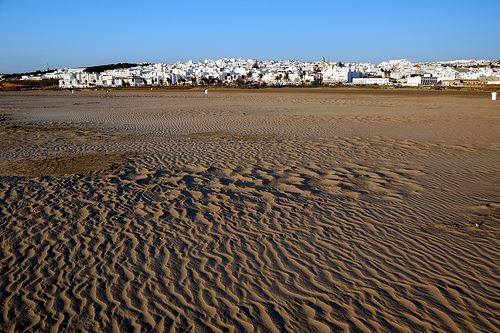
"Espejismos", Conil de la Frontera, Cadiz, South-west of Spain, by Basilievich, at flickr.com
 0
Like
Published at 2:39 PM Comments (0)
0
Like
Published at 2:39 PM Comments (0)
Legal tip 897. Spain and the United States avoid double taxation to aid investment
Thursday, February 7, 2013
The governments of Spain and the United States take a further step to avoid double taxation and facilitate investment between both countries.
The Spanish Minister for the Treasury, Cristóbal Montoro, and the US ambassador to Spain, Alan D. Solomont, signed a modification protocol to the agreement in order to avoid double taxation for American companies looking to invest in Spain, or for Spanish companies wishing to do the same in the United States. Moreover, there is hope that the signing of this protocol will also improve an exchange of information between both countries.
This new document must now be ratified by both national parliaments with a view to it coming into force no later than three months after its endorsement. The protocol modifies 14 of the 24 articles in the agreement. Therein, both countries have agreed to afford the other better treatment as regards investments, reducing the tax burden on dividends and increasing the range of the reduced rate bracket and tax exemption circumstances.
The United States continues to be one of Spain's main investors, registering investments to the order of 43,926 million. In 2011, Spain was the seventh ranked European country to receive American investments, behind such countries as The Netherlands, Luxembourg, The United Kingdom, Ireland, Switzerland and Germany. Indeed, it stands in fifteenth position in terms of American investment worldwide.
American foreign investment focuses on the following sectors: technology, finance and service industries, which are normally based in developed countries that have advanced infrastructures and good communications systems.
The United States has become the biggest green field investor in the world. From 2003 to 2012, it has undertaken 29,571 projects, representing an investment of over €1,200,000. China is where America has invested most in green field projects, with Spain holding fifth position among the European economies in this area and fourteenth position worldwide.
The following are other sectors that attract great interest from American investment projects: Information and Communication Technologies (ICT), which account for 21% of all their projects, Business Services which represent 11.5% of their investments and finally Financial Services which take up 6.4% of their total foreign investment activities.
Source: investinspain.org
.jpg)
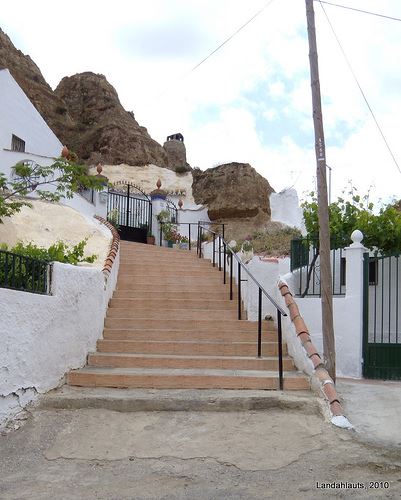
"Barrio de las Cuevas", Guadix, Granada, South-east of Spain, by Landahlauts, at flickr.com
 0
Like
Published at 1:53 PM Comments (1)
0
Like
Published at 1:53 PM Comments (1)
Spam post or Abuse? Please let us know
|
|